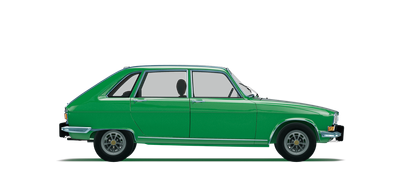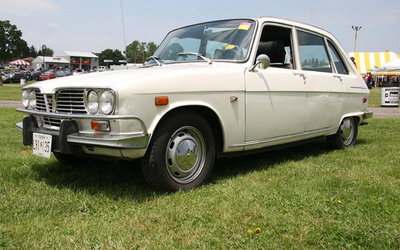Renault 16 Generation 1 (Facelift 1971)
Introduction
The Renault 16 Generation 1, also known as the "R16," was a popular car model that revolutionized the automotive industry. The first generation of the R16 was introduced in 1965, but it received a significant facelift in 1971, which further enhanced its appeal.
Design and Features
The facelifted Renault 16 Generation 1 boasted a more modern and streamlined design compared to its predecessor. Its sleek and elongated body featured updated headlights, a revised front grille, and a restyled rear end. The overall aesthetic changes gave the car a refreshed and contemporary look.
One of the standout features of the R16 was its innovative hatchback design. It was one of the first mass-produced hatchbacks in the world, offering unmatched practicality and versatility. With its ample boot space and folding rear seats, the R16 provided a level of flexibility that was unprecedented at the time.
Performance and Engine Options
The facelifted R16 offered several engine options, catering to a wide range of drivers' needs. The most popular variant was the 1.6-liter inline-four engine, which produced a respectable 80 horsepower. This engine provided a balanced mix of performance and fuel efficiency, making it an ideal choice for everyday driving.
For those seeking more power, there was also a 1.8-liter engine available, capable of delivering 93 horsepower. This variant offered improved acceleration and a higher top speed, catering to enthusiasts who desired a sportier driving experience.
Comfort and Technology
Renault prioritized passenger comfort in the R16 Generation 1 facelift. The spacious interior offered ample legroom and headroom for both the front and rear passengers. The seats were designed to provide excellent support and cushioning, ensuring a comfortable ride even on long journeys.
In terms of technology, the R16 featured a range of advanced features for its time. It had a heating and ventilation system, allowing occupants to regulate the temperature inside the car. Additionally, power steering was available as an optional extra, making maneuvering the R16 effortless and smooth.
Safety and Reliability
The R16 Generation 1 facelift incorporated various safety features to ensure drivers and passengers remained safe on the road. It had disc brakes on all four wheels, providing reliable stopping power even in emergency situations. The R16 also had a robust chassis design, offering enhanced structural rigidity and crash protection.
Renault's reputation for reliability carried over to the R16, with the facelifted model benefitting from improved build quality and materials. This ensured that the car remained dependable, reducing the likelihood of breakdowns and costly repairs.
Conclusion
The Renault 16 Generation 1 facelift of 1971 elevated this already exceptional car to new heights. With its updated design, range of engine options, comfort features, and improved safety measures, the R16 became an even more attractive choice for customers.
This car model generation played a crucial role in popularizing the hatchback body style, setting the stage for future automotive trends. The R16 Generation 1 facelift remains a classic and sought-after car among enthusiasts and collectors, showcasing Renault's commitment to innovation, performance, and customer satisfaction.


